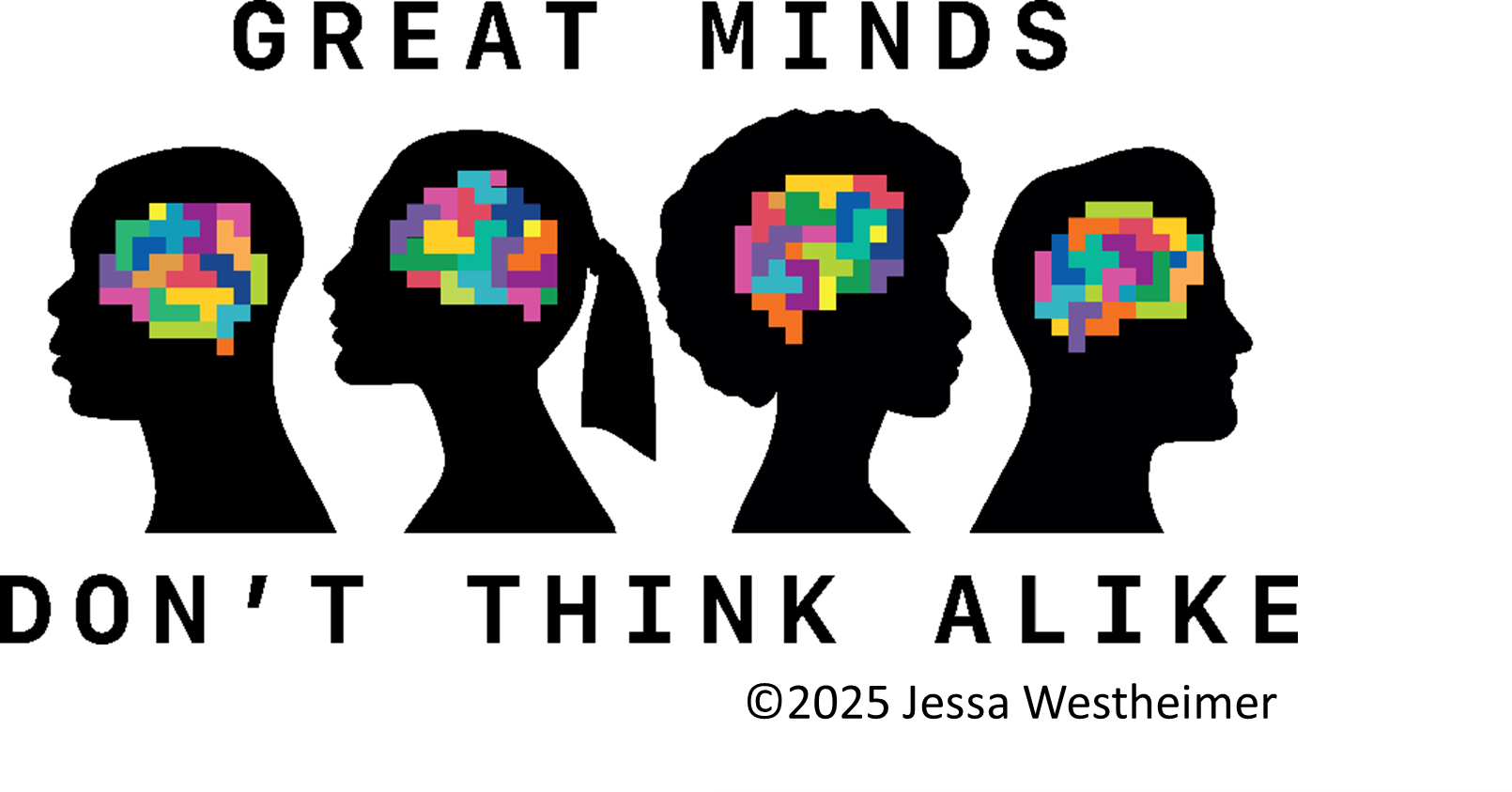Great Minds Don’t Think Alike: Great Minds Think Differently

This April, in honor of Autism Acceptance Month, we’re challenging the familiar saying, Great Minds Think Alike. Instead, we want to celebrate a more powerful truth: Great Minds Think Differently.
Fifteen years ago, Temple Grandin, PhD, delivered a TED Talk that has now been viewed over 7 million times and continues to be relevant. In it, she shared how the world needs all kinds of minds to tackle its most complex and enduring problems. Diagnosed with autism spectrum disorder (ASD) as a child, Dr. Grandin offered a compelling reminder: not everyone sees or understands the world the same way—and that’s a strength.
In a recent discussion with Dr. Grandin, she particularly emphasized the importance of “visual thinkers” and has written about this extensively in her book, Visual Thinking. Dr. Grandin shared that, “by overlooking visual thinkers, we risk excluding some of our best problem-solvers.” She distinguishes object visualizers—those who think in images (e.g., like pictures on her phone)—from more traditional pattern-based thinkers, like mathematicians. Visual thinkers have unique strengths, from mechanical aptitude to the ability to spot real-world patterns and understand how things work—skills that have applications in fields like engineering, design, and even decoding ancient texts. For instance, it was visual thinking that helped identify ink patterns on CT scans of fragile volcanic scrolls—something AI and computer programming alone couldn’t do without human, visual-thinking insight. Grandin argues that solving complex problems—from food systems to AI development—”requires all kinds of minds, especially visual thinkers.” Without the detailed perception of visual thinkers, “essential steps and insights can be missed – like in the case of the volcanic scrolls,” states Dr. Grandin.
Her message is backed by science. Research consistently shows that individuals with ASD can think in fundamentally different ways, including visual, systems-oriented, or highly detail-focused thinking. A full spectrum of thinking is not only valid—it’s vital. Studies on innovation and problem-solving show like-minded groups often fall short when it comes to breakthrough thinking. Instead, it’s the integration of unique perspectives that drives real progress.
In the world of science, this idea has taken root in what is called “team science.” Today, cross-disciplinary collaboration—often multidisciplinary, interdisciplinary, or transdisciplinary—is driving our major scientific advancements.
- Multidisciplinary teams bring together experts from different fields who contribute within their own areas.
- Interdisciplinary teams integrate knowledge and methods across disciplines.
- Transdisciplinary teams go even further, blending fields to approach problems in completely new ways.
These approaches combine theories, experiences, and expertise to tackle the world’s most pressing challenges—from infectious diseases to poverty and global conflict. And having individuals with ASD on all teams is strategic.
We know that people with ASD bring unique strengths to the table:
- Exceptional visual-spatial skills
- Strong attention to detail and memory
- Deep, sustained focus on areas of interest
- High performance in fields like technology, mathematics, and the arts
Despite these strengths, individuals with ASD may hesitate to share their identities due to past social challenges, stigma, or low self-esteem. They may mask their differences to blend in, which can diminish their ability to fully contribute.
If we truly want to harness the full potential of all minds, we need to rethink what collaboration looks like. Maybe we need different kinds of chairs at the table—or no table at all. Maybe we define team roles based on a person’s strengths, not on traditional, outdated expectations.
Ultimately, embracing neurodiversity means recognizing and including the unique ways individuals with ASD think, work, and contribute. Like Dr. Grandin’s impact on agricultural science, these minds have the power to shift paradigms, spark innovation, and change the world—precisely because they think differently.